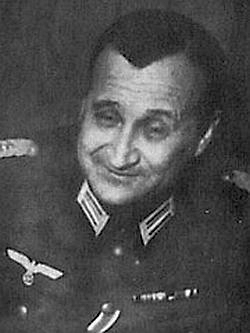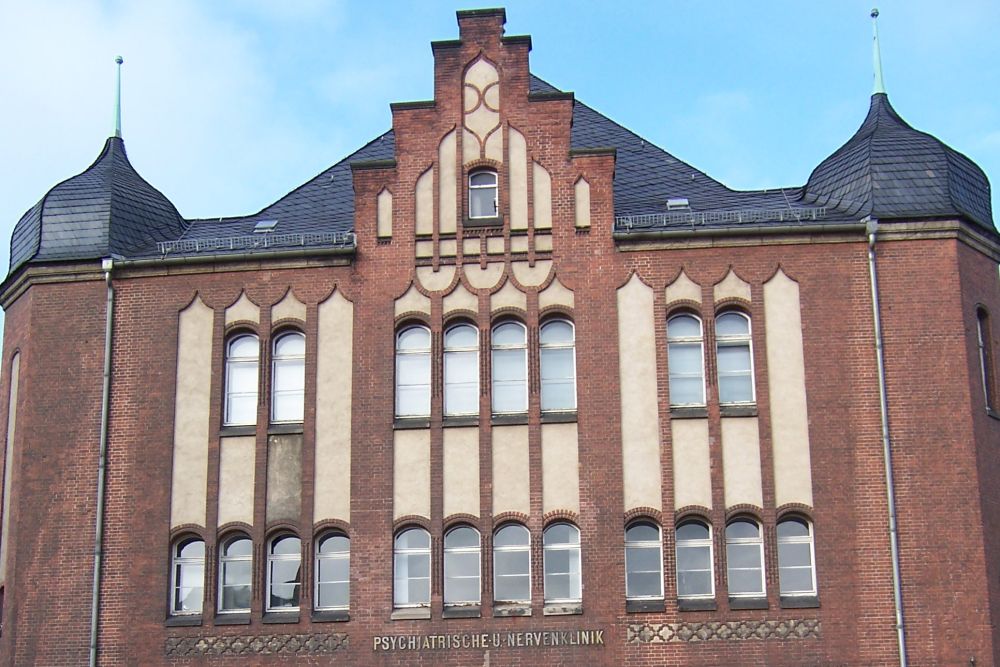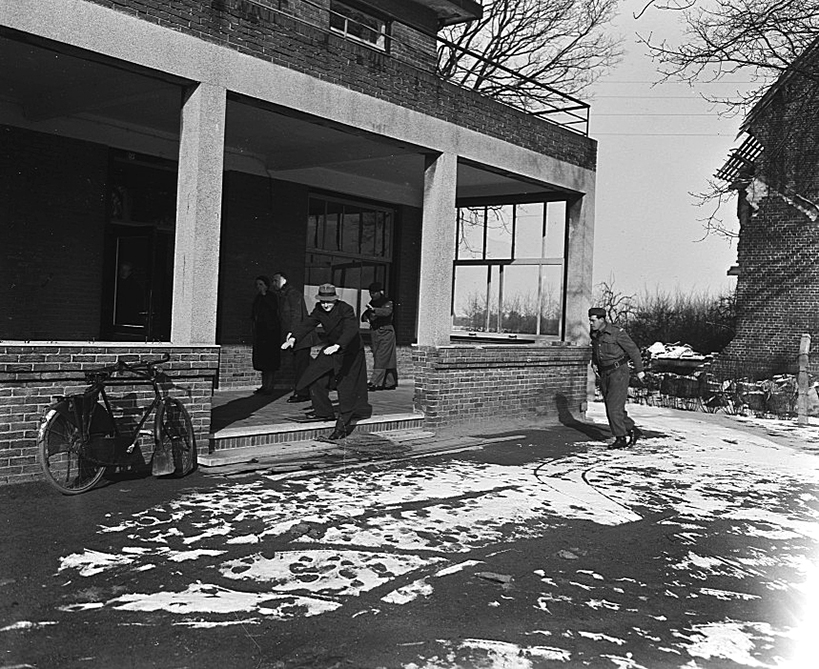Crinis, de, Maximinus Friedrich Alexander "Max"
- Date of birth:
- May 29th, 1888 (Ehrenhausen bei Graz, Austro-Hungary)
- Date of death:
- May 2nd, 1945 (Stahnsdorf bei Berlin, Germany)
- Service number:
- SS-Nr. 276.171 / NSDAP-Nr. 688.247
- Nationality:
- Austrian
Biography
Max de Crinis was an Austrian psychiatrist. In 1927, he held a professorship in Graz. He joined the NSDAP in 1931 and made friends with the leader of Sicherheitsdienst Reinhard Heydrich. After the assault on the Austrian Federal Chancellor Engelbert Dollfuss and the failed coup by the Nazis, he fled to Germany where he led the university psychiatric clinic in Cologne. Among other things, he conducted a research on schizophrenia.
At the Charité university hospital in Berlin, he was assigned a professorship in psychiatry in 1938 as a successor of Karl Bonhoeffer, the father of the resistance men Dietrich and Klaus (executed by the Nazis in 1945). In addition, from 1939, De Crinis was a member of the supervisory board of the Kaiser-Wilhelm-Institut for brain research.
On the 9th November 1939, at the invitation of Walter Schellenberg, chief of the foreign department of Sicherheitsdienst, he played the role of "colonel Martini" in the so-called "Venlo-incident", when two British agents in Venlo (Netherlands) thought they were to meet the members of German opposition, but got tricked and were arrested by the SD.
As a doctor and SS member, De Crinis played an important role in euthanasia program T4 of the Nazis. He contributed to the making of the euthanasia law. Therefore, he was partly responsible for murdering tens of thousands of disabled people in Nazi Germany. From 1940, he was also a medical advisor for the governmental ministry of sciences.
In 1944, he became a scientific advisor for Karl Brandt, the Reich Commissioner for health care. In October of that year, he became the head of the psychiatric institute of the military medical academy and consulting psychiatrist in the German army.
On the 2nd May 1945, De Crinis and his wife committed suicide by taking a pill of cyanide. This way he escaped persecution by the Allies.
Promotions:
18 Februari 1936: SS-Untersturmführer
20 April 1937: SS-Obersturmführer
11 September 1938: SS-Hauptsturmführer
1 February 1941: Oberfeldarzt
1 December 1942: Oberstarz
1942: SS-Standartenführer und beratender Psychiater der Waffen-SS
1944: Oberster beratender Heerespsychiater
Do you have more information about this person? Inform us!
- Period:
- Second World War (1939-1945)
- Rank:
- SS-Hauptsturmführer (Captain)
- Unit:
- SD-Auslandsnachrichtendienst, Sicherheitsdienst des Reichsführers-SS (SD)
- Awarded on:
- November 12th, 1939
Personally presented by Adolf Hitler
- Period:
- Second World War (1939-1945)
- Rank:
- SS-Hauptsturmführer (Captain)
- Unit:
- SD-Auslandsnachrichtendienst, Sicherheitsdienst des Reichsführers-SS (SD)
- Awarded on:
- November 12th, 1939
Personally presented by Adolf Hitler
- Period:
- Second World War (1939-1945)
- Unit:
- Oberfeldarzt
- Awarded on:
- 1941
Sources
- Photo 1: (Public Domain)
- - JONG, L. DE, Het Koninkrijk der Nederlanden in de Tweede Wereldoorlog 2, Staatsuitgeverij, Den Haag, 1969.
- KLEE, E., Das Personenlexikon zum Dritten Reich, Fischer, Frankfurt am Main, 2007.
- Hitler's Intelligence Chief: Walter Schellenberg - Reinhard Doerries
- Gestapo im OP: Bericht der Krankenhausärztin Charlotte Pommer - Charlotte Pommer
- Max de Crinis - Axis History Forum
- Max de Crinis
- Translation Liza de Groot








